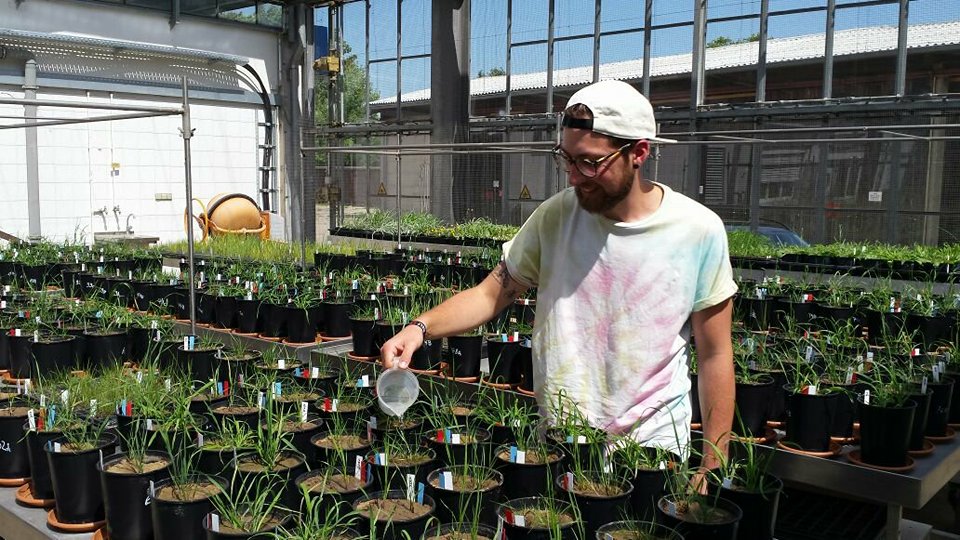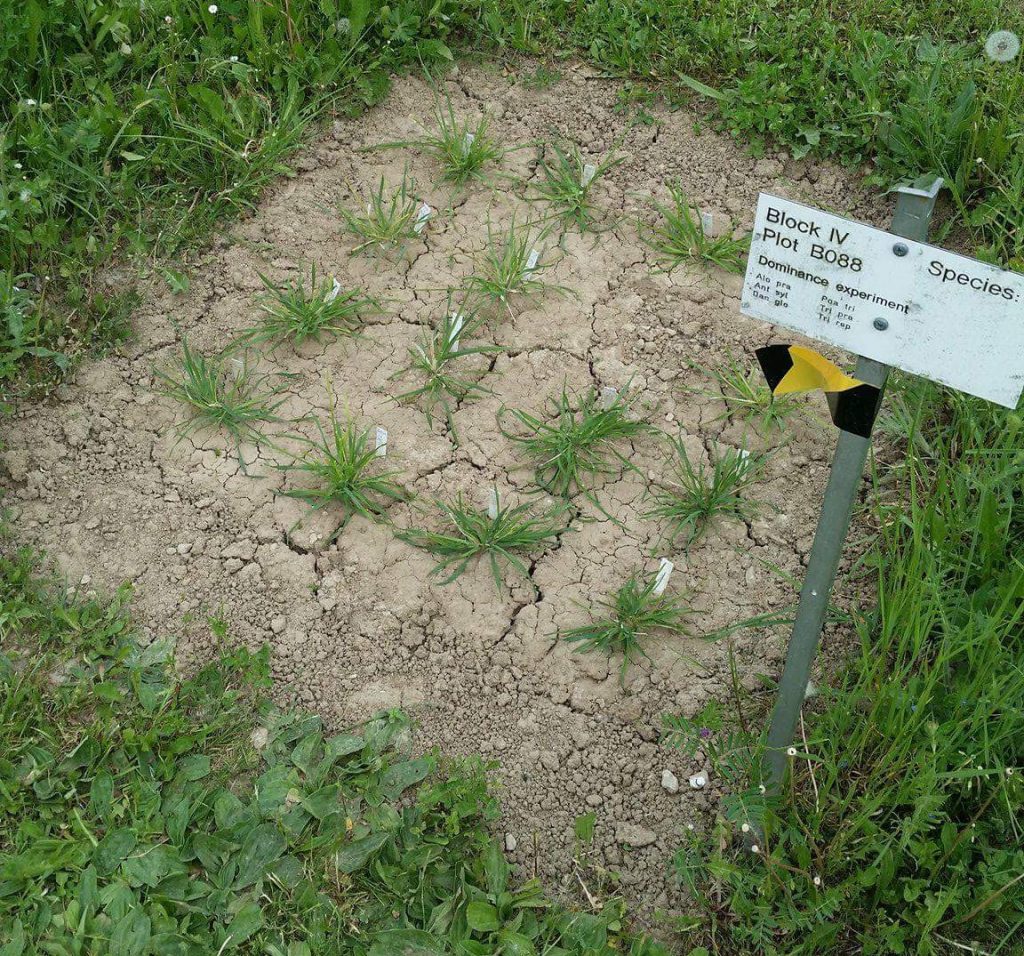How does biodiversity loss affect the response of plant species to global change?
Principle Investigators: Christiane Roscher, Nico Eisenhauer, Simone Cesarz
PhD student: Peter Dietrich

Loss of diversity can alter the selection environment that plants experience, so that persisting species must adapt to novel biotic interactions, especially to changes in the composition of mutualistic and antagonistic soil biota (new positive or negative plant-soil feedbacks). However, little is known about how fast the remaining species adapt to the novel biotic conditions and whether such micro-evolutionary processes affect the response of these species to global change. To address this knowledge gap, we investigated species-poor and species-rich plant communities and performed a common garden and a phytometer experiment to test the following hypotheses:

(1) Species interactions with soil biota depend on their shared plant diversity and environmental histories (1a), such that species are better adapted to their soil environment of origin (home-soil). Species performance is weaker if individuals are transplanted into a different soil environment (away-soil; 1b).
(2) Plant individuals in their origin soil environment (home-soil) have a higher performance than individuals transplanted into a different soil environment (away-soil), when treated with global change drivers (drought, increased nitrogen input).
To test hypothesis 1a, we took plant and soil samples to determine species performance (plant biomass, root biomass, nitrogen concentrations in plant and soil, etc.) and the degree of negative and positive plant-soil feedbacks (nematodes, mycorrhizal colonization) in the 1-, 2-, 6- and 9-species plots of the dominance experiment. Furthermore, in 2018 we established the phytometer experiment to check hypothesis 1b. Therefore, we collected seeds from 4 grass species growing in the 2- and 6-species plots of the dominance experiment and transplanted seedlings grown from these seeds either in the dominance plot where the mother was growing (home-soil) or in plots with a different soil environment (away-soil; after removal of the vegetation). To test hypothesis 2, we took soil and seed samples from the same dominance plots, which were also used for the phytometer experiment, and established a common garden experiment manipulating the soil environment (home or away) and the impact of drought and increased nitrogen input in a full factorial design.

We expect that species-rich communities show more positive plant-soil feedbacks and species-poor communities more negative plant-soil feedbacks. Furthermore, we expect that individuals in home-soil show higher performance (biomass) and higher resistance to global change drivers than individuals in away-soil. These results could help to prove whether plant individuals of the same species took different evolutionary pathways depending on the plant species diversity of neighborhood and resulting specificity of soil biota and that micro-evolutionary changes may impact species responses to global change drivers, which might be important to understand the mechanisms how ecosystems respond to the ongoing process of global change.



